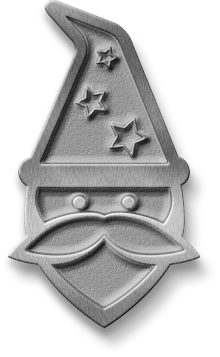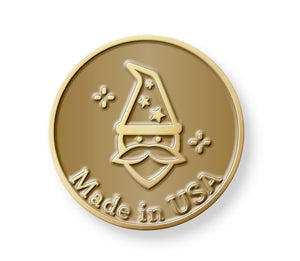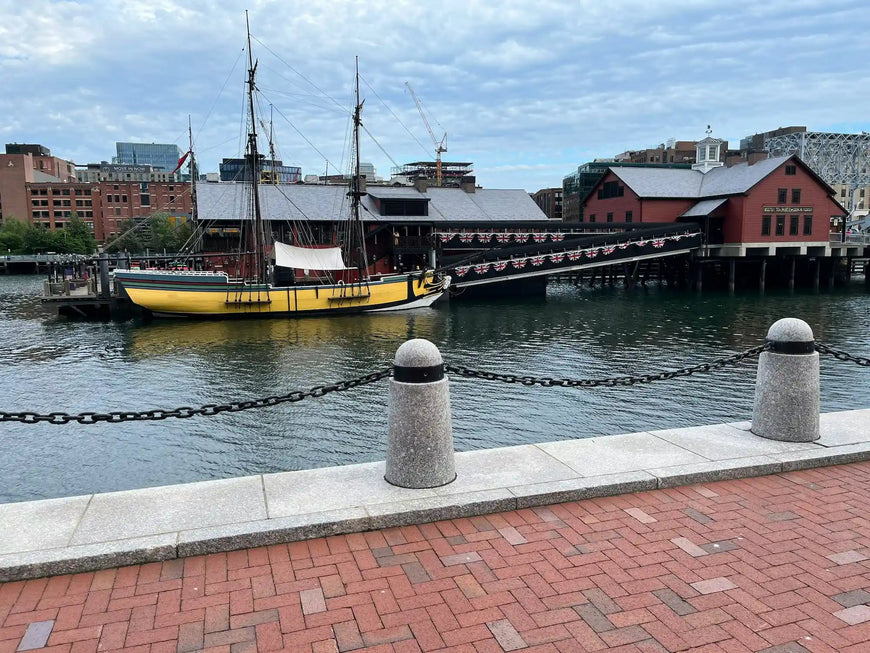Boston Tea Party: The Road to American Revolution
On a freezing night in December 1773, a bold act of rebellion shook Boston Harbor and set the stage for revolution. Angry over British taxation, a group of colonists known as the Sons of Liberty boarded British ships and dumped 342 chests of tea into the water. Their protest was fueled by the Tea Act of 1773, which gave the British East India Company a monopoly and hurt colonial merchants. Disguised as Native Americans to hide their identities, the protesters sent a clear message: "No taxation without representation." The British government responded with harsh punishments, pushing the colonies closer to war. More than just a protest against tea taxes, the Boston Tea Party became a powerful symbol of unity and resistance that still represents the fight for self-rule today.
Tea Trade to 1767
By the 1600s, tea had become Europe's most sought-after luxury, imported from China's Qing dynasty. British traders fought to control the market, and in 1698, the British Parliament gave the East India Company a monopoly over tea imports. In 1721, a new law tightened that grip, forcing British colonists to buy tea only from Britain, where middlemen raised prices before shipping it to major ports like Boston and Philadelphia.
For years, this system worked. The East India Company paid high taxes, around 25%, on tea entering Britain, and Parliament added even more fees for local buyers. But smugglers saw an opportunity. Untaxed Dutch tea flooded the market, offering a cheaper alternative that cost the British government £400,000 a year by the 1760s. Colonists happily joined in buying from the Dutch, avoiding taxes and acting on their frustration with Britain's control over their daily brew.
In 1767, Parliament tried to save the East India Company by cutting its taxes and refunding duties on tea shipped to America. But there was a catch: Britain needed to make up for lost revenue, so it introduced new taxes, including one on colonial tea. To London, this was just smart economics. To the colonists, it was a slap in the face. With protests brewing and cries of "no taxation without representation" growing louder, tea had become more than a drink: It was the spark for revolution.
- The East Indian Monopoly and the Transition From Limited Access in England
- Tea: Brewing a Revolution
- The British East India Company and the Origins of the American Revolution
- The Townshend Acts and Colonial Protest
- Tea History: Taxation Without Representation
Tea Act of 1773
By 1773, the once-powerful East India Company was drowning in debt. A mix of surplus tea, colonial resistance, and a devastating famine in Bengal had wrecked its finances. In a desperate attempt to save the company, Parliament passed the Tea Act, which would let the company sell tea directly to selected colonial merchants, cutting out London middlemen to lower costs and beat smugglers at their own game. But there was a catch: the Tea Act kept the three-pence-per-pound tea tax on import to the colonies, which the colonists had been protesting for years.
Why keep a tax that fueled so much anger? One motivation was that removing the tax might be seen as a sign that Parliament might be backing down on its assertion that it had a right to tax the colonies. Another reason to keep the tea tax was that revenue from the tax paid the salaries of British-appointed governors and judges in the colonies, ensuing their loyalty to the crown. Prime Minister Lord North ignored warnings that the tax would stir rebellion, assuming that the colonies would be happy to buy tea that was still cheaper than it had been before. The numbers were designed to be tempting: A pound of legal tea now cost two shillings, one penny coin less than smuggled Dutch tea.
But the move backfired. Colonists saw through the trick and viewed it as another way for Britain to control them. What Britain saw as a practical solution turned into an argument for resistance. From Philadelphia to Boston, outrage spread. The Tea Act didn't just make tea cheaper: It exposed Britain's overreach and gave revolutionaries the perfect symbol to rally around. Instead of calming tensions, Lord North had just poured fuel on the fire of rebellion.
- British Parliament Passes Unpopular Tea Act
- Tea Act of 1773
- What Was the 1773 Tea Act?
- Colonists Respond to the Tea Act and the Boston Tea Party
- Understanding the Tea Act of 1773 and its Significance and Impact on American History
Resisting the Tea Act
In the fall of 1773, seven ships crossed the Atlantic, packed with more than 2,000 chests of East India Company tea. Four ships headed for Boston, while the rest made their way to New York, Philadelphia, and Charleston. But as word spread about the Tea Act, colonial ports exploded in protest. For the colonists, this wasn't just about the price of tea; it was about power. Britain was trying to trick them into accepting taxation and patch up relations by offering cheaper tea. Samuel Adams made it clear that this wasn't business: It was tyranny in disguise.
The Sons of Liberty sprang into action, forcing tea consignees, colonial merchants chosen to sell the East India Company's tea, to resign and branding them as traitors if they refused. In Charleston, the tea was seized by customs officials after merchants backed down under public outrage. In Philadelphia, Benjamin Rush warned that the tea carried the "seeds of slavery," and angry crowds forced the tea ship to turn back to England. New York followed suit, with its consignees resigning and a storm-damaged ship retreating without unloading its cargo.
Nowhere was resistance stronger than in Massachusetts, where British control was tightest. By December, Boston stood alone as the last battleground. Its harbor was no longer just a shipping dock; it was the stage for a bold act of defiance that would go down in history.
- Voices of the Revolution: Sons of Liberty
- History and the Census: The 1773 Boston Tea Party
- Boston Tea Party
- Timeline of the Boston Tea Party
Standoff in Boston
Massachusetts Gov. Thomas Hutchinson, whose own sons were among the tea merchants being affected by the protests, was determined to enforce British rule. He made it clear that the ships wouldn't leave Boston until the tea was unloaded and the tax was paid. When a ship known as the Dartmouth arrived in late November 1773, Samuel Adams and other Patriots saw their moment. Thousands of angry colonists packed into Faneuil Hall, then overflowed into the Old South Meeting House, their voices shaking the rafters as they planned how they would respond. Adams and his supporters had one demand: Send the ship back to England without paying the tax.
British law gave the Dartmouth 20 days to unload its cargo before it could be seized. To stop the tea from being unloaded, 25 men stood guard at the docks. But Hutchinson refused to let the Dartmouth leave. Soon, two more ships, the Eleanor and the Beaver, joined it in the harbor, carrying even more tea. On Dec. 16, the last possible day before British officials could seize the cargo, between 5,000 and 7,000 colonists (almost half the city) crammed into the Old South Meeting House. When word arrived that Hutchinson still refused to compromise, Adams famously declared, "This meeting can do nothing further to save the country."
Some later claimed that this was a secret signal to start the Tea Party, but firsthand accounts suggest otherwise. The crowd lingered, restless, waiting for action. Adams, hoping for a peaceful solution, even tried to stall them. But the people had had enough: This was the moment when the pin would be pulled after years of frustration. As night fell, a group of determined men headed for the harbor. Hutchinson's hard-headedness had backfired. By dawn, Boston Harbor would be filled with floating tea, and the colonies would be one step closer to revolution.
- The Boston Tea Party Was a Fight Against Monopoly, Not High Taxes
- The Tea Act and the Boston Tea Party
- The Destruction of the Tea
- The Boston Tea Party
- Ships of the Boston Tea Party: Eleanor, Beaver, and Dartmouth







































